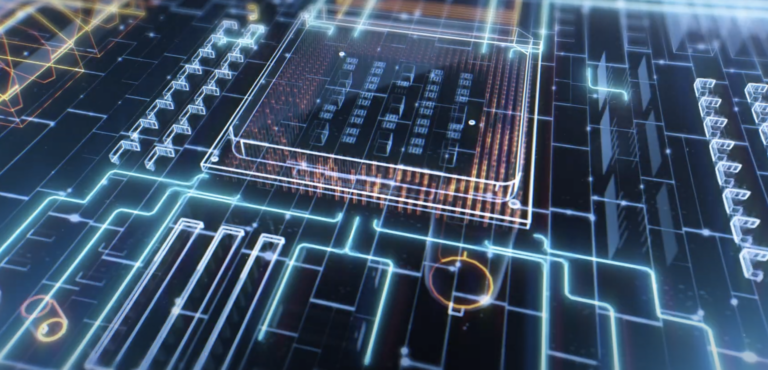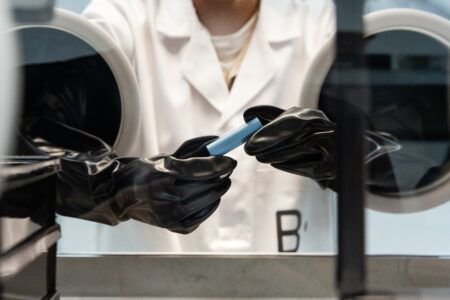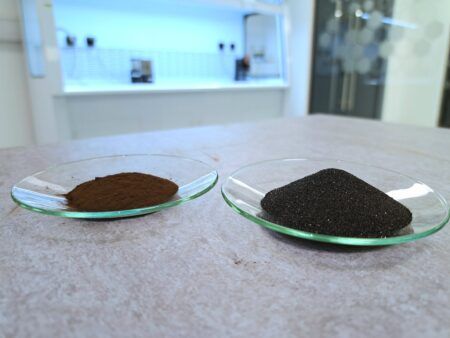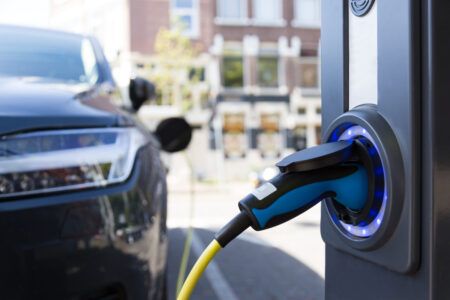A battery science company has revealed a breakthrough technology to power electric vehicle batteries that fuses silicon nanowires onto commercial graphite powders – a step that claims to deliver increased battery range, while decreasing charge time and cost.
To build a battery with more silicon has been a longtime challenge for the EV industry but OneD Battery Sciences has created SINANODE, which integrates into existing manufacturing processes, tripling the energy density of the anode while halving its cost per kWh. The higher energy density increases battery range while nanowires shorten charging time, enabling OEMs to design and produce electric vehicles that answer the booming market demand for better batteries.
“During this decade, we will witness the largest and fastest transformation of a global industry that’s ever been seen, and the decisions made today will determine which car makers come out on top of a market poised to bring in over US$6 trillion between 2025 and 2030 alone,” said Vincent Pluvinage, CEO, OneD Battery Sciences. “EV demand will be driven by range, charge time, and cost, and our SINANODE technology addresses each of these purchase drivers in a significant way. Bottom line, 2025 winners of the EV race will be powered by the only technology equipped to get the most silicon into the battery.”
Over the last three years, leading graphite suppliers, cell makers, and EV makers in the U.S., Europe, and Asia, have tested SINANODE by applying the technology to commercial EV-grade graphite used in the anodes of EV batteries.
The company claims key findings and benefits include increased range and battery life. Its process of fusing silicon nanowires to commercial graphite powders from multiple suppliers is reported to tripled the anode specific capacity (Capacity > 1000 mAh/g, a measure of energy stored per unit weight). The SINANODE anode material can then be blended with graphite, to achieve high Initial Coulombic Efficiency (to > 92%, a key metric used in matching anodes and cathodes) and a higher anode specific capacity over more than 1000 full charge/discharge cycles than any state-of-the-art EV cells in production today.
To reduce cost, SINANODE was developed with commercial manufacturing CVD equipment available from multiple vendors, using only silane and nitrogen gases available in very large quantities. This is said to reduce the investments and time necessary to scale up the SINANODE step to EV quantities, while decreasing the cost of EV anodes (measured in $ per kWh) by almost 50%, when compared to the cost of most competitive anodes used in EV batteries today.
The company also announced its pilot programs, providing EV OEMs with their own dedicated plant to deploy the SINANODE step, creating differentiated nanosilicon configurations for their high-performance Li-ion batteries vision and their 2024 EV production cycle ambitions. SINANODE’s technical achievements, patent portfolio and business model enable EV makers to dramatically increase the use of nanosilicon in the anodes of lithium-ion batteries, and meet near-term consumer demand for longer range, faster charging, and more affordable EVs.
Furthermore, Fabrice Hudry, a veteran energy executive, has joined OneD Battery Sciences as chief commercial officer, overseeing SINANODE production as the company begins the deployment of pilot production facilities and partnerships. Hudry joins the company after a seven year tenure at Samsung SDI, where he was vice president of energy solutions.
“What Silicon nanowires can do for the electric car battery is simply remarkable, and represents the most long-awaited innovation for the industry,” noted Hudry.





